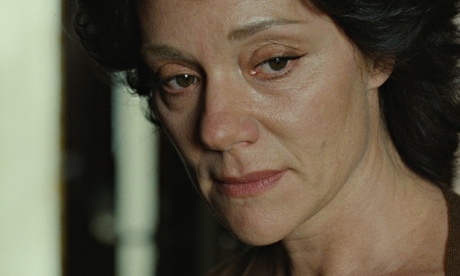
Anxiety has always been woven into the fabric of film-making. From the nail-biting Hitchcock thriller to the bombastic Hollywood action movie, most films work to keep viewers on the edge of their seats; even a romantic comedy can bring a level of worry about whether everything will turn out as it should.
But can films actually help us understand anxiety as a clinical condition, experienced – according to the Mental Health Foundation – by almost 5% of the UK population? Yes, says Jonathan Keane, film curator for the foundation's first Anxiety arts festival, taking place in London this month. "The history of film," he says, "is the history of anxiety. At a screening of the Lumière brothers' early film The Arrival of a Train at La Ciotat, people ran out screaming: they thought the train was coming right at them. But film doesn't just make us feel anxious: it also stages anxiety, and helps us to understand how it works."
Here, then, is a selection of films that do this best, as chosen by Keane and a panel of psychologists.
Safe
Todd Haynes's 1995 drama stars Julianne Moore as a suburban housewife who convinces herself she is being assailed by invisible pollutants. Psychologist Colette Hirsch of King's College London says the character's condition bears many of the hallmarks of generalised anxiety disorder. "There's a lot of ambiguity set up in the film," she says. "This relates very much to the way people with the disorder apply negative interpretations to apparently innocuous things. In a 2010 study, we showed that if you help people to develop a more positive interpretation of situations – more like those used by the rest of the population – this reduces their tendency to worry."
If only that treatment had been offered to Moore's character: instead, she ends up ensnared in a sinister cult.
The Headless Woman
For Keane, this 2008 Argentinian film – called a "masterpiece" by the Guardian's Peter Bradshaw – is a study of the importance of the "tipping point": the moment when a particular experience or incident kicks off an unhealthy cycle of worry. In the film, this comes when the main character, Verónica, hits something with her car, and doesn't stop. Gradually, she becomes convinced that she has killed a child; the director, Lucrecia Martel, cleverly depicts her emotional disintegration. "It's a brilliant exploration of how anxiety can cause people to start seeing things that aren't there," Keane says. "The character literally loses her head. There's no easy resolution, but we do see her start to find closure. That's useful, too, in reminding people with anxiety that there will be an end to it."
Solaris
In Andrei Tarkovsky's 1972 movie, adapted from a science-fiction novel by Stanislaw Lem, a psychologist, Kris Kelvin, is dispatched to help three astronauts apparently going insane on a distant space station. According to Vyv Huddy, a lecturer in clinical psychology at University College London, the film provides a compelling example of how those with an anxiety disorder will try to categorise their feelings, and then avoid exposure to their source. "We see that tendency towards avoidance in Kelvin's behaviour," he says. "We also get a sense of the anxiety created by being so far away from home, and the different ways people try to cope." And with Kelvin gradually becoming implicated in the strange world of the space station, Huddy thinks it's a particularly useful film for clinicians, too. "We see how difficult it can be," he says, "to separate yourself completely from the people you are treating."
Waltz With Bashir
Made by Israeli film-maker Ari Folman in 2008, this powerful animation stands between documentary and autobiography: it's an attempt, in film, to recover the director's lost memories of serving in the Israeli invasion of Lebanon in 1982. Nick Grey, a consultant clinical psychologist at the South London and Maudsley NHS trust, says it is also a powerful evocation of post-traumatic stress disorder, one of anxiety's best-known manifestations. "The film deals with trying to complete gaps in memory," he says, "and also with some of the powerful beliefs that people with PTSD are left with: 'I didn't do enough', 'I abandoned him'. It's those beliefs that keep the anxiety going."
Opening Night
Gena Rowlands starred in her husband John Cassavetes' 1977 examination of anxiety on- and offstage. She plays veteran Broadway actor Myrtle Gordon, whose confidence is severely shaken after a young female fan is killed in an accident. "There are two levels of anxiety at work here," Keane says. "One is performance-related, and the other is about how a woman is to grow old when she has been so defined by her image. She begins to go off-script while acting – not unlike what we see in real life in people with anxiety problems. They sometimes start to say things that don't make sense."
Of course all these films – and the many others that describe anxiety, and its treatment – are works of art: none of them can be expected to offer the rigorous analysis of a clinical research paper. What they can do, though, is help cut through the levels of silence and misunderstanding that still surround this complex condition. "We seem to feel that anxiety is a personal problem," Keane says, "and one we can't do anything about. My hope is that anyone who sees these films - and others - will understand that they're not alone. Anxiety often makes people feel that they're stuck. Films like these might just be able to help get them moving."
• These films, and others, are showing as part of the Anxiety Arts Festival, which continues until the end of June.

